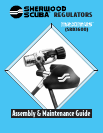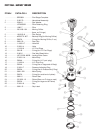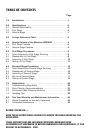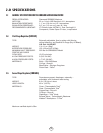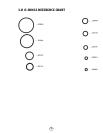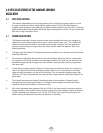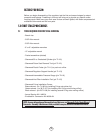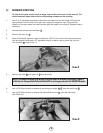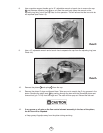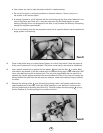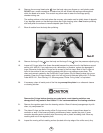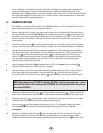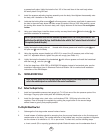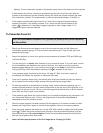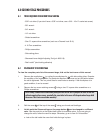
4.0 SPECIAL FEATURES OF THE MAXIMUS SRB3600
REGULATOR
4.1 FIRST STAGE FEATURES
1 The external adjustability of the first stage allows you to adjust the regulator output to match
the type of diving being done. Relatively low outlet pressure (120 psi, 8.3 Bar) helps the
regulator resist freezing in cold water diving. Medium outlet pressure (130 psi, 9 Bar), combines
good breathing effort and durability. Relatively high outlet pressure (150 psi, 10 Bar), maximizes
flow rate for high work effort dives.
4.1 SECOND STAGE FEATURES
1 The Maximus regulator's unique underarm hose routing protects the hose from snagging on
obstructions during close quarters diving (coral, caves, wrecks, piers, etc.). This routing also
allows for better head movement, thus lowering jaw fatigue caused by the hose pushing or
pulling the second stage. A longer hose and unique swivels make the regulator ideal in air-
sharing exercises.
2. The large high flow Wisdom
®
mouthpiece and the oval exhaust valve provide comfort and lower
breathing resistance.
3. The externally adjustable demand valve in the second stage allows the diver to custom-tailor
the regulator to the diving conditions and interstage pressure. The knob can be backed off for
extended storage periods of longer than three months, eliminating the need for purge button
lock down tabs.
4. To help prevent rapid pressure buildup in the first stage, the Maximus allows you to leave the
knob in the backed off (counter-clockwise) position when the air is first turned on, and then
close the knob (clockwise) until the airflow just stops. This is especially important when high
(3500 psi, 241 Bar) tank pressures are used because it helps prevent rapid heat buildup at the
piston seat.
5. The smooth hydrodynamic shape of the second stage is less resistant to forward motion
through water, thus lowering jaw fatigue. The shape is also designed to resist free-flowing
caused by rapid initial immersion or forward motion.
6. With lower interstage hose pressure (120 psi, 8.3 Bar), the heat transfer fins become warmer
during exhalation, and transfer heat to the lever support area (thus aiding in freeze resistance).
At high interstage hose pressures (135-150 psi, 9.3-10 Bar), the transfer fins become much
colder, causing condensation and moisture retention for the diver.
4



